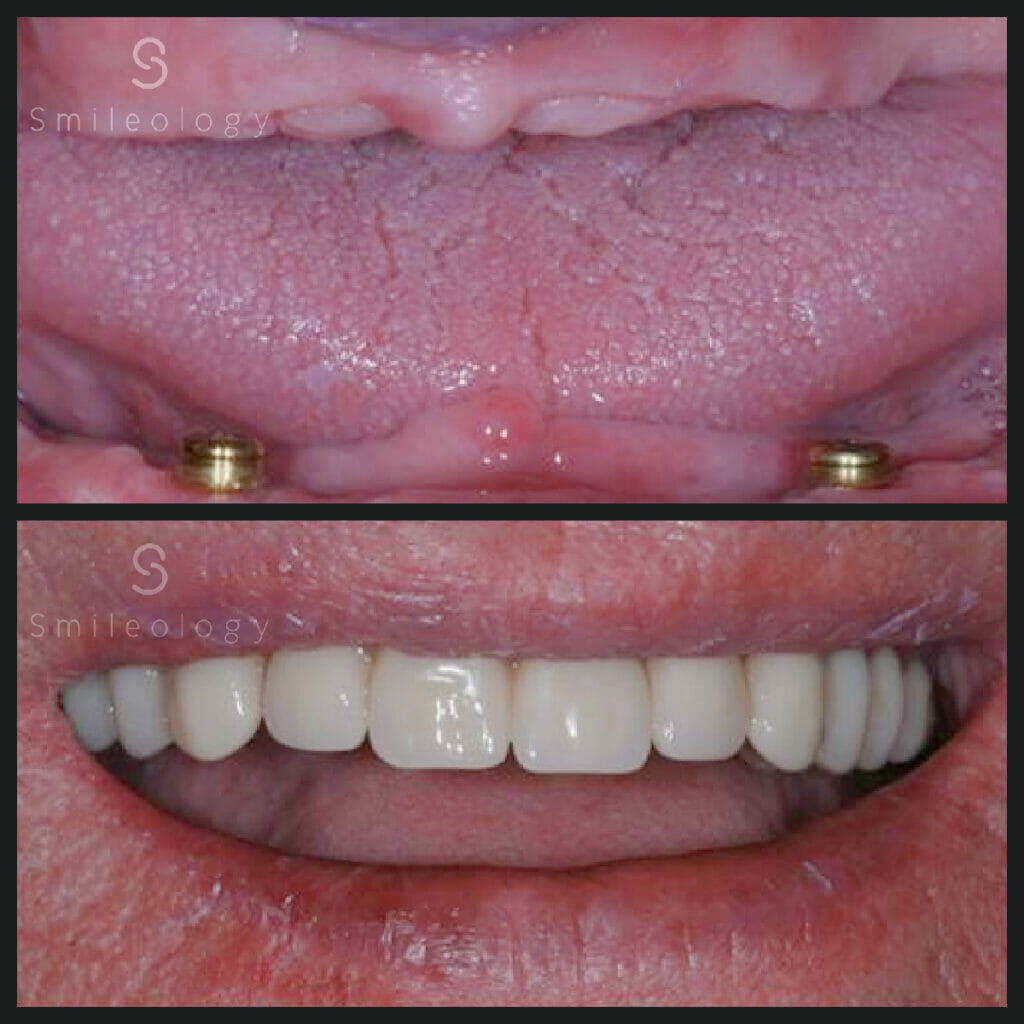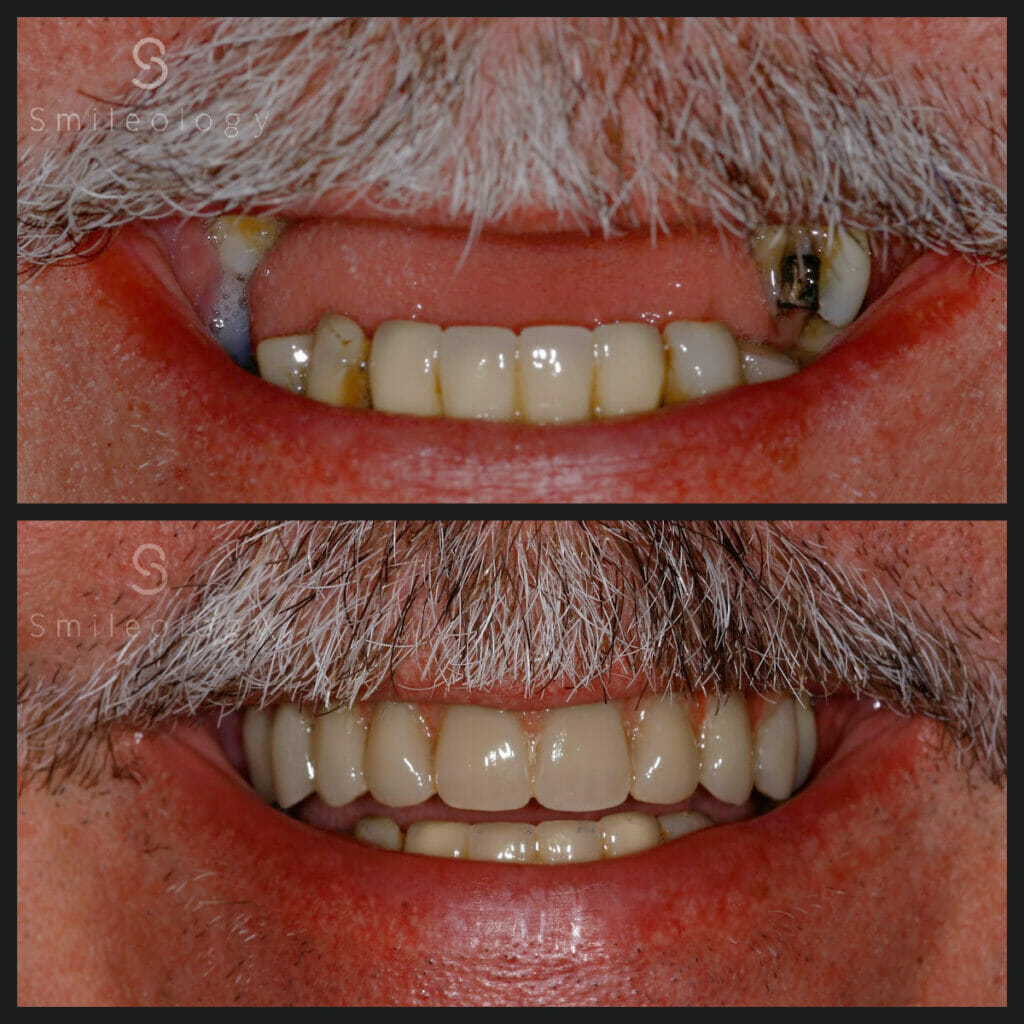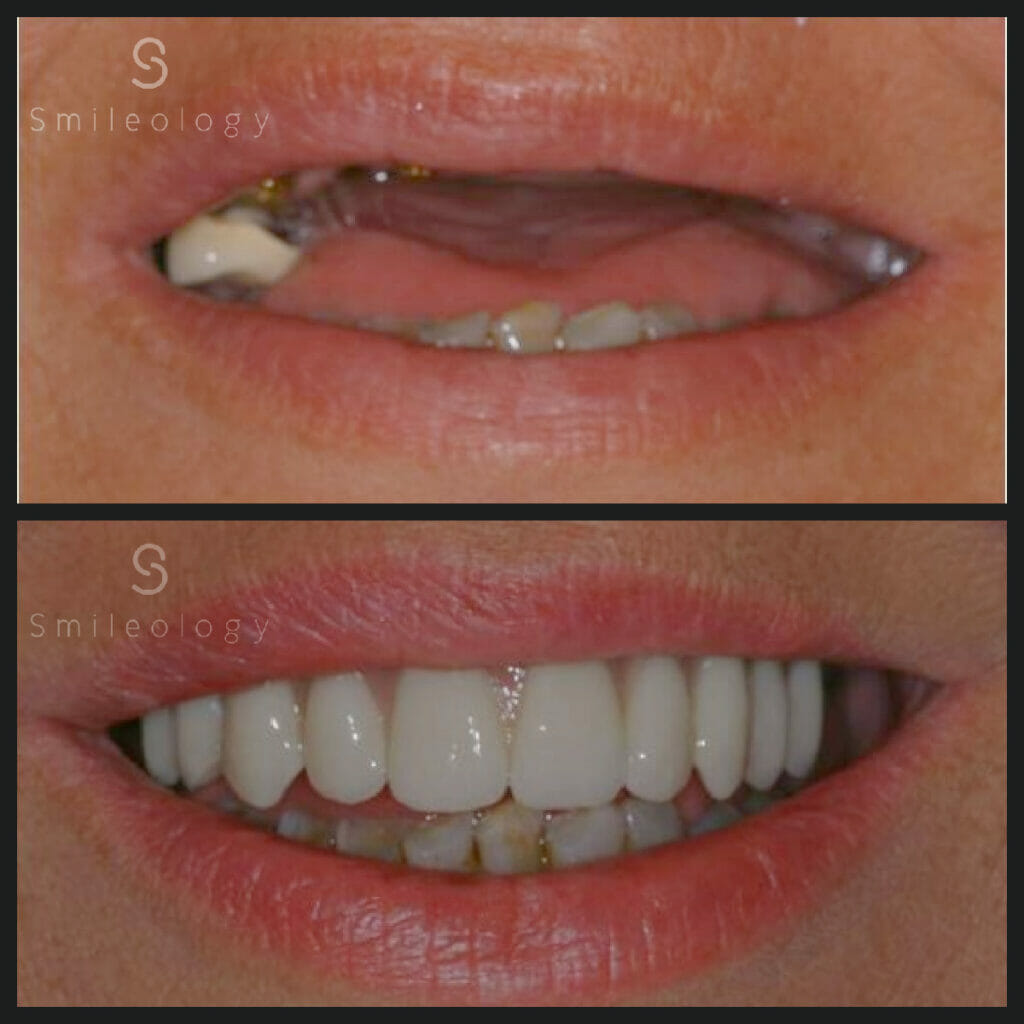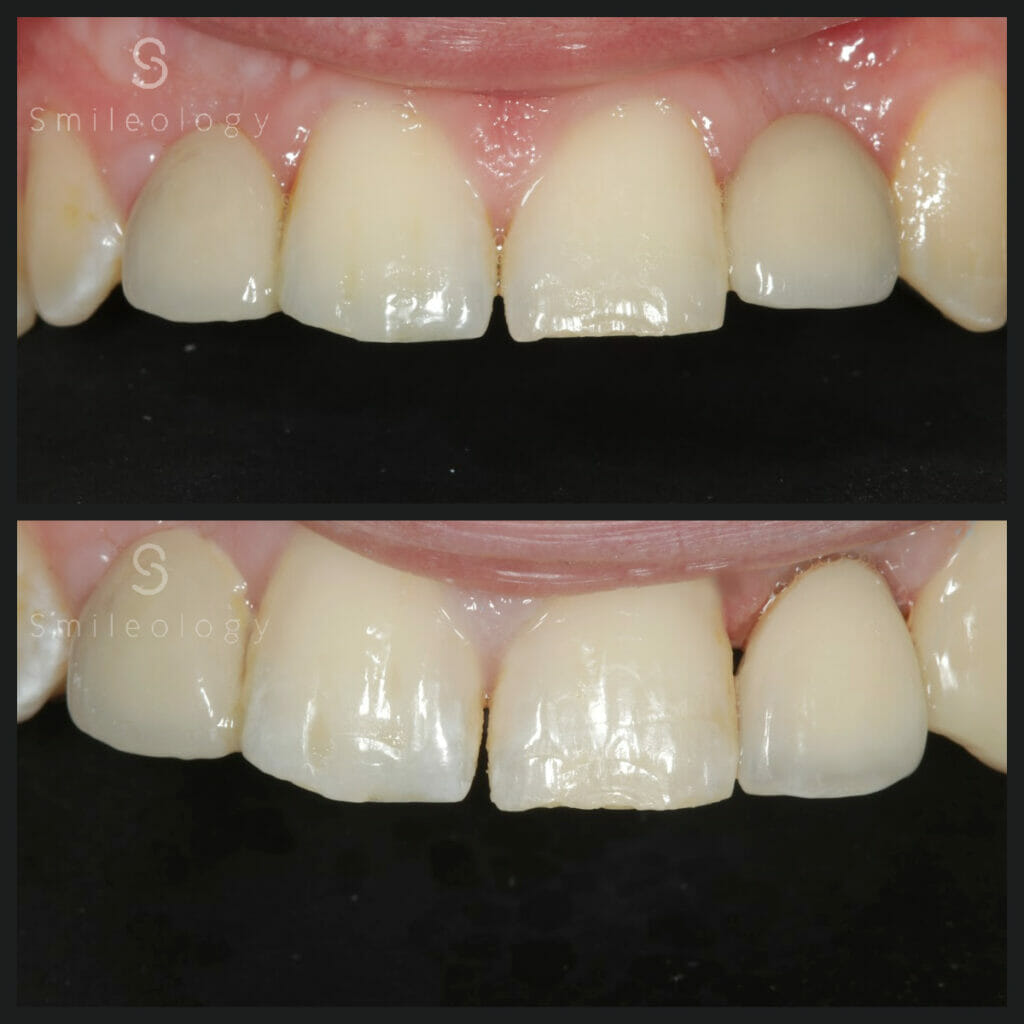Dental implants have revolutionised the field of dentistry, offering a permanent solution for missing teeth. We explore the history of dental implants, from early forms to the modern advancements we see today. Delve into the inventors behind this groundbreaking technology, such as Dr. Leonard Linkow, Dr. Per-Ingvar Brånemark, and others. Discover how dental implants have evolved over time, the benefits they offer, and who makes a good candidate for this procedure. Learn more about the process of getting dental implants and what to expect at each stage.
What Are Dental Implants?
Dental implants are innovative solutions in modern dentistry for dental restoration, providing a permanent and effective method for tooth replacement.
They play a crucial role in restoring oral health by not only replacing missing teeth but also preserving jawbone integrity and preventing further deterioration. Compared to traditional methods like dentures or bridges, dental implants offer superior durability and functionality, mimicking the look and feel of natural teeth. Technological advancements in implant dentistry have led to more precise placement techniques, shorter recovery times, and improved success rates, making them a preferred choice for those seeking a long-term solution to tooth loss.
History of Dental Implants
The history of dental implants traces back to early inventions and developments in oral surgery, leading to the creation of modern dental implant techniques.
These early forms of implants can be traced back to ancient civilisations like the Mayans and Egyptians, who used shells, stones, and metals to replace missing teeth. The true evolution of dental implants began in the 1950s when Swedish orthopaedic surgeon Dr. Per-Ingvar Brånemark accidentally discovered osseointegration while studying bone healing. This discovery revolutionised the field of dentistry and paved the way for the development of titanium implants, which are now the standard in modern implant dentistry.
Early Forms of Dental Implants
The early forms of dental implants date back to ancient civilisations where rudimentary techniques were used to address tooth loss, paving the way for future innovations in implant dentistry.
These primitive methods often involved the use of materials such as shells, bones, and even stones to create tooth replacements. In ancient cultures, the concept of osseointegration, where the implant fuses with the bone, was not yet understood, leading to varying success rates.
Despite the challenges, tooth replacement held immense cultural significance in early societies, symbolising status, beauty, and even spiritual beliefs. The evolution of dental implant techniques over time showcases the importance of restoring oral health and function in human history.
The Development of Modern Dental Implants
The development of modern dental implants has revolutionised oral surgery, incorporating advanced materials and precise surgical procedures to enhance the success rates of dental implant surgeries.
With advancements in materials like titanium and zirconia, dental implants are now more durable and biocompatible, offering patients long-lasting solutions for missing teeth. Surgical techniques have evolved to include computer-guided implant placement, reducing risks and improving accuracy. Innovation in implant design has led to customisable options that match the patient’s natural teeth seamlessly, providing not only functional benefits but also aesthetic appeal. These developments have significantly improved the overall experience for patients seeking dental restoration, ensuring greater comfort and satisfaction.
Who Invented Dental Implants?
Several pioneers have contributed to the invention and innovation of dental implants, shaping the landscape of implant dentistry and oral healthcare.
Among these key figures are individuals like Dr. Leonard Linkow, whose groundbreaking work revolutionised the field of implant dentistry. Dr. Linkow’s pioneering techniques and advancements in implant materials paved the way for modern implant procedures. Similarly, Dr. Per-Ingvar Brånemark made significant contributions with his discovery of osseointegration, the process that forms the basis for successful implant integration in the jawbone. Their dedication and vision have left a lasting impact on modern dental practices, improving the quality of life for countless individuals in need of tooth replacement solutions.
Dr. Leonard Linkow
Dr. Leonard Linkow, a renowned dental implant specialist, played a pivotal role in advancing implant techniques and procedures, contributing significantly to the field’s advancements.
His groundbreaking research and innovative methodologies have had a profound impact on modern dental implant practices, revolutionizing the way missing teeth are restored and enhancing patient outcomes.
Dr. Linkow’s dedication to refining implant materials and designing efficient surgical protocols has set new standards for the industry, inspiring a new generation of dental professionals to push the boundaries of implant dentistry.
Through his relentless pursuit of excellence and commitment to patient care, he has left an indelible mark on the field that continues to shape its evolution.
Dr. Per-Ingvar Brånemark
Dr. Per-Ingvar Brånemark is widely recognised for his groundbreaking research on osseointegration, a crucial concept that revolutionised the success of dental implant procedures.
His discoveries have not only transformed the way dental implants are approached but have also significantly enhanced the longevity and effectiveness of these procedures. By uncovering the biological process through which an implant fuses with the surrounding bone, Dr. Brånemark’s work has set new standards in dental implantology. His pioneering contributions have paved the way for countless patients to achieve restored smiles and improved oral health through the use of dental implants.
Dr. Charles Babbidge
Dr. Charles Babbidge is known for his contributions to dental implant materials and innovative design concepts that have enhanced the quality and durability of dental prostheses.
His groundbreaking work in developing advanced biomaterials has revolutionized the field of implantology, leading to significant improvements in implant longevity and overall patient satisfaction.
By focusing on creating materials that closely mimic natural teeth in terms of strength, durability, and biocompatibility, Dr. Babbidge has played a pivotal role in enhancing the success rate of dental implants.
His dedication to technological innovations has not only improved the aesthetic appeal of dental prostheses but also ensured better functional outcomes for patients undergoing implant procedures.
Dr. Norman Goldberg
Dr. Norman Goldberg has been instrumental in the development of cutting-edge dental implant products, working closely with manufacturers to enhance the quality and effectiveness of implant solutions.
His strategic collaborations have not only advanced the field of implant dentistry but have also paved the way for the seamless integration of new technologies, leading to improved patient outcomes and satisfaction. Dr. Goldberg’s expertise and vision have played a crucial role in shaping the landscape of dental implants, empowering practitioners with innovative solutions that cater to the evolving needs of patients. Through his partnerships with leading manufacturers, he continues to drive innovation and excellence in the realm of dental implantology.
Other Contributors to the Development of Dental Implants
Numerous other professionals have also played key roles in advancing dental implant technologies and promoting innovation in the field of implant dentistry.
These individuals’ diverse contributions have brought unique perspectives and groundbreaking ideas to the table, propelling the evolution of dental implants. Their innovative approaches, ranging from novel materials to advanced surgical techniques, have significantly shaped the landscape of modern implant dentistry. Through their dedication and expertise, these lesser-known figures have not only expanded the possibilities of tooth replacement but also enhanced the overall success rates and patient experience associated with dental implants.
How Have Dental Implants Evolved Over Time?
Dental implants have undergone significant evolution over time, with advancements in techniques, materials, and design revolutionising the field of modern dentistry.
These innovations have paved the way for improved success rates and durability of implants, offering patients a more natural look and feel. From the early days of using materials like ivory and seashells to modern titanium fixtures that fuse with the jawbone, the progression of dental implants showcases the relentless pursuit of enhancing oral health and restoring smiles.
Innovations such as computer-guided implant placement and 3D printing technologies have further refined the precision and customisation of implant treatments, marking a new era in dental care delivery.
Advancements in Materials
Advancements in dental implant materials have played a crucial role in improving osseointegration and enhancing the success rates of dental implant surgeries.
These materials have evolved significantly in terms of biocompatibility, durability, and ability to integrate seamlessly with the surrounding bone tissue. The use of titanium alloys and zirconia ceramics, for instance, has revolutionised the field of dental implantology by providing enhanced strength and long-term stability. The introduction of newer surface treatments and coatings has further optimised the interaction between the implant and the bone, leading to faster healing and reduced risk of complications post-surgery. Such advancements have not only improved patient outcomes but also expanded the possibilities for complex dental restorations.
Improvements in Surgical Techniques
Innovations in surgical techniques have transformed the landscape of implant dentistry, allowing for more precise and minimally invasive procedures with improved patient outcomes.
From traditional surgical methods to the integration of computer-guided technologies, the evolution of dental implant procedures has been nothing short of remarkable.
Surgeons can now utilise 3D imaging and virtual planning tools to map out procedures with unprecedented accuracy, reducing the margin of error and ensuring optimal implant placement.
Advancements in materials and instruments have enabled quicker surgeries, minimal post-operative discomfort, and accelerated healing times.
These innovations have not only revolutionised the field but have also significantly enhanced the overall patient experience, making dental implant surgeries more accessible and efficient.
Innovations in Design
Innovations in dental implant design have led to the creation of prostheses that closely mimic natural teeth, thanks to the expertise of dental implant specialists in crafting customised solutions.
These specialised professionals work meticulously to ensure that each dental implant prosthesis not only restores functionality but also enhances the overall aesthetics of a patient’s smile. By utilising advanced technologies and materials, such as zirconia and CAD/CAM technology, specialists can tailor prostheses to fit seamlessly with the patient’s natural dentition, resulting in a comfortable and natural-looking outcome. This focus on both form and function highlights the dedication of dental implant specialists to providing patients with long-lasting solutions that meet their unique needs and preferences.
What Are the Benefits of Dental Implants?
Dental implants offer a multitude of benefits, including natural-looking dental restoration, long-term tooth replacement, and enhanced oral function and aesthetics.
One of the key advantages of dental implants is their unparalleled durability. Unlike traditional restoration methods that may require frequent repairs or replacements, dental implants are designed to last a lifetime with proper care. This longevity not only provides peace of mind but also saves time and money in the long term. The stability offered by implants prevents surrounding teeth from moving, preserving the natural alignment of the smile and supporting overall oral health.
Who Is a Good Candidate for Dental Implants?
An ideal candidate for dental implants should possess healthy gums, adequate bone density, good oral health, and a non-smoking habit, ensuring the success of the oral surgery procedure.
In addition to these criteria, it is essential for potential candidates to have realistic expectations about the implant process and be committed to maintaining excellent oral hygiene post-surgery. Regular dental check-ups and cleanings play a crucial role in the long-term success of dental implants. The patient’s overall health condition, including any chronic diseases like diabetes, should also be considered, as they can impact the healing process after implant placement. Lifestyle habits such as heavy alcohol consumption or teeth grinding may influence the candidacy evaluation as well.
Healthy Gums
Having healthy gums is essential for successful dental implant placement and long-term maintenance, as gum health directly impacts the stability and longevity of implants.
Healthy gums serve as the foundation for dental implants, providing vital support for the artificial tooth roots. When gums are in good condition, they can help to prevent infections and inflammation around the implant site, reducing the risk of complications post-surgery. Proper gum health also ensures that the surrounding bone structure remains strong and healthy, which is crucial for the overall success of the implant procedure.
Regular dental check-ups and diligent oral hygiene practices play a key role in maintaining optimal gum health, allowing patients to enjoy the benefits of their dental implants for years to come.
Adequate Bone Density
Sufficient bone density is a crucial factor for dental implant longevity and quality, as it provides the necessary support and stability for the implant structure.
Inadequate bone density can lead to complications such as implant failure or loosening over time, affecting the success of the dental restoration. Bone assessments, including scans and evaluations, are essential before implant placement to ensure there is enough bone to support the implant effectively.
Without sufficient bone density, the implant may not integrate properly with the jawbone, resulting in a weaker foundation for the restoration. Regular monitoring of bone density post-implant is also important to identify any issues early and take necessary corrective measures for optimal oral health.
Good Oral Health
Maintaining good oral health is paramount for successful dental implant care and long-term follow-up, as oral hygiene practices play a crucial role in preserving implant health.
Regular care and follow-up visits are essential components in ensuring the longevity and success of dental implant treatments. These check-ups allow dental professionals to monitor the health of the implants, address any potential issues early on, and provide necessary guidance on oral hygiene practices specific to maintaining dental implants.
Neglecting follow-up visits can lead to complications such as peri-implantitis, a condition that can jeopardise the stability of the implant and overall oral health. By prioritising regular care and check-ups, individuals can safeguard their investment in dental implants and enjoy a healthy, functional smile for years to come.
Non-Smoker
Being a non-smoker is essential to reduce dental implant risks and complications, as smoking can hinder the healing process and increase the likelihood of implant failure.
Tobacco use has been closely linked to compromised blood flow, delayed healing, and decreased bone density in the jaw, all of which are detrimental to the success of dental implant procedures. Smoking can weaken the body’s immune response, making it more susceptible to infections that can jeopardize the implant’s integration with the surrounding tissue. By adopting a smoke-free lifestyle, individuals not only enhance their overall health but also significantly improve the chances of achieving long-lasting and durable dental implants.
What Is the Process for Getting Dental Implants?
The process of getting dental implants typically involves a series of steps, starting from initial consultation and treatment planning to the actual placement of the implant and subsequent follow-up care.
During the initial consultation, the dental professional will assess your oral health and determine if you are a suitable candidate for dental implants. Once the treatment plan is finalised, the next step is the surgical placement of the implant into the jawbone. This procedure may involve local anaesthesia to ensure your comfort. Following the placement, a healing period is necessary to allow the implant to fuse with the bone. Post-operative care includes regular check-ups and proper oral hygiene to maintain the longevity of your dental implants.
Consultation and Treatment Planning
The initial consultation and treatment planning phase are crucial in establishing the patient’s suitability for dental implants and creating a customised treatment roadmap based on individual needs.
During this pivotal stage, the dentist carries out a comprehensive evaluation to assess the patient’s oral health, bone structure, and overall suitability for dental implant surgery. Through detailed examinations and imaging studies, the dentist gains valuable insights into the patient’s unique dental situation, allowing for the development of a tailored treatment plan. This personalised approach ensures that the patient’s specific needs and concerns are addressed, enhancing the success and longevity of the dental implant procedure. Obtaining informed consent from the patient at this stage is essential to ensure a collaborative and transparent treatment process.
Placement of the Implant
The precise placement of the dental implant is a critical step in the surgical process, ensuring proper integration with the jawbone for a stable and enduring foundation.
Successful osseointegration, where the implant fuses with the surrounding bone tissue, largely depends on meticulous surgical technique. Surgeons meticulously evaluate factors such as bone density, quality, and location to determine the optimal position for the implant.
Post-operative care plays a crucial role in promoting healing and minimising complications. Patients are advised to follow strict oral hygiene practices, attend regular follow-up appointments, and avoid habits that could jeopardize the success of the implant, such as smoking. By adhering to these principles, patients can enhance the longevity and functionality of their dental implants.
Healing and Integration of the Implant
The healing and integration phase following implant placement is crucial for osseointegration to take place, marking the beginning of the implant’s journey towards stability and functional use.
During this phase, the body’s natural healing processes work to bind the implant with the surrounding bone tissue. Patients must adhere to specific post-operative care instructions to ensure the success of the osseointegration process. This includes maintaining proper oral hygiene, avoiding behaviours like smoking that can hinder healing, and attending regular follow-up appointments with the dental provider. In addition, following industry standards for implant maintenance is essential to protect the integrity of the implant and maximise its longevity within the patient’s jawbone.
Placement of the Abutment and Crown
The placement of the abutment and crown represents the final stages of the dental implant process, where the prosthetic components are attached to the implant structure, completing the restoration.
These components play a crucial role in not just aesthetics but also in ensuring the functionality and longevity of the implant. The abutment acts as the connector between the implant and the crown, providing structural support and stability. Industry best practices emphasise the careful selection of materials for the abutment and crown to achieve a seamless integration with the surrounding teeth. By following these guidelines, dentists can ensure that the final restoration not only looks natural but also functions effectively, providing the patient with a durable and aesthetically pleasing solution.
Frequently Asked Questions
Who invented dental implants?
Ans: Dr. Per-Ingvar Branemark, a Swedish orthopedic surgeon, is credited with inventing the modern dental implant in the 1950s.
What inspired the invention of dental implants?
Ans: Dr. Branemark’s work on bone healing and regeneration led to the realization that titanium could fuse with bone tissue, laying the foundation for the development of dental implants.
How did Dr. Branemark’s invention of dental implants impact the field of dentistry?
Ans: Dr. Branemark’s invention of dental implants revolutionized the field of dentistry by providing a permanent solution for missing teeth that closely mimics natural teeth in form and function.
Are there any other notable individuals who contributed to the development of dental implants?
Ans: Yes, Dr. Leonard Linkow, a New York dentist, is considered the “father of modern dental implantology” for his pioneering work in implant dentistry in the 1950s and 1960s.
What are the materials used in dental implants?
Ans: The most commonly used material in dental implants is titanium, as it is biocompatible and can fuse with the jawbone. Other materials, such as zirconia, are also used for dental implants.
How have dental implants evolved since their invention?
Ans: Dental implants have come a long way since their invention, with advancements in materials, techniques, and technology. Today, dental implants have a high success rate and are a routine procedure in dentistry.
Internal Links:
External Links:





































